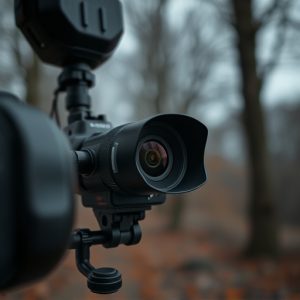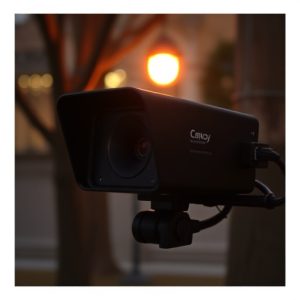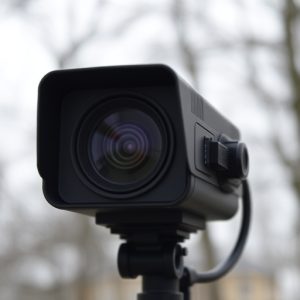Master Tiny Camera Signal Detection: Home Monitoring Unobtrusively
Tiny cameras for home monitoring leverage electromagnetic signal detection to enhance privacy and se…….
Tiny cameras for home monitoring leverage electromagnetic signal detection to enhance privacy and security. Understanding natural EMI patterns helps differentiate between interference and alerts from hidden surveillance devices. Strategic camera placement, optimal settings, and regular firmware updates ensure effective monitoring. Advanced users employ sophisticated techniques like EMI source pinpointing for comprehensive protection. Reliable brands offering compact HD cameras with extended battery life cater to diverse home security needs.
Uncover the secrets of home security with the power of tiny cameras and electromagnetic signal detection. In today’s digital age, understanding how to navigate and protect your personal space is paramount. This comprehensive guide delves into the art of identifying electromagnetic signals, a crucial aspect of surveillance device functionality. Learn how to choose the ideal tiny camera for your needs and master setup techniques for optimal monitoring. Explore advanced tips to enhance signal detection, ensuring your home security remains unobtrusive yet robust.
- Understanding Electromagnetic Signals: A Foundation for Detection
- Choosing the Right Surveillance Device for Your Home
- Setting Up and Optimizing Your Tiny Camera for Effective Monitoring
- Advanced Tips: Enhancing Signal Detection for Unobtrusive Home Security
Understanding Electromagnetic Signals: A Foundation for Detection
Electromagnetic signals are an integral part of our modern world, especially with the proliferation of tiny cameras for home monitoring. These signals, often invisible to the naked eye, carry a wealth of information that can be harnessed and interpreted using the right tools and techniques. Understanding how electromagnetic signals work is crucial for detecting hidden surveillance devices, as these signals can reveal the presence and activity of such devices within a space.
When it comes to home monitoring with tiny cameras, knowing the types of electromagnetic emissions from common household items and electronic devices helps in distinguishing between natural signal interference and potential alerts from hidden surveillance equipment. By learning to recognize these patterns, users can effectively navigate their environments, ensuring privacy and security without relying solely on visual confirmation.
Choosing the Right Surveillance Device for Your Home
When selecting surveillance devices, especially tiny cameras for home monitoring, understanding your specific needs is paramount. Consider factors like coverage area, resolution, and battery life to ensure the device fits seamlessly into your home’s layout. For instance, if you’re focusing on a small room or specific zones, a compact camera with HD quality and extended battery life will be ideal. These tiny cameras can blend into decor, offering peace of mind without compromising privacy.
Opting for reliable brands known for their advanced technology ensures performance and durability. Additionally, features like motion detection, night vision, and two-way audio enhance functionality. With these considerations in mind, you’ll find the right surveillance device tailored to your home’s unique requirements, providing effective monitoring and security.
Setting Up and Optimizing Your Tiny Camera for Effective Monitoring
When setting up a tiny camera for home monitoring, placement is key. Mount it in a strategic location that offers a clear view of the area you want to monitor, ensuring minimal obstruction from furniture or decorations. Consider using tripods or wall mounts to achieve the best angle and stability. Lighting conditions also play a significant role; aim for well-lit areas during the day, and ensure adequate night vision with infrared capabilities if necessary.
To optimize your tiny camera’s performance, adjust its settings accordingly. Fine-tune the resolution for sharp and detailed images, experiment with frame rates to capture fast-moving objects smoothly, and set sensitivity levels to detect even subtle electromagnetic signals. Regularly updating firmware can also enhance its capabilities, making it a more effective monitoring tool for your home security.
Advanced Tips: Enhancing Signal Detection for Unobtrusive Home Security
In the realm of home security, tiny cameras for monitoring have become a game-changer. These compact devices offer unobtrusive surveillance, discreetly fitting into various environments. To maximize their effectiveness, advanced users employ sophisticated techniques like electromagnetic signal detection. By honing in on these subtle signals, which often go unnoticed, you can uncover hidden transmissions from devices within your home network.
This approach demands a keen understanding of electromagnetic interference (EMI) patterns and the ability to differentiate between natural fluctuations and potential signals from covert cameras or tracking devices. Utilizing specialized equipment designed for EMI detection, along with expert interpretation of data, enables security professionals to pinpoint sources, ensuring no stone is left unturned in securing your personal space.
When it comes to home security, utilizing tiny cameras for monitoring offers a discreet yet powerful solution. By understanding electromagnetic signals and employing advanced detection techniques discussed in this article—from choosing the right devices to optimizing setup—you can significantly enhance your home’s protection without compromising privacy. Equip yourself with knowledge, select the best tools, and rest easy knowing your home is secure.


